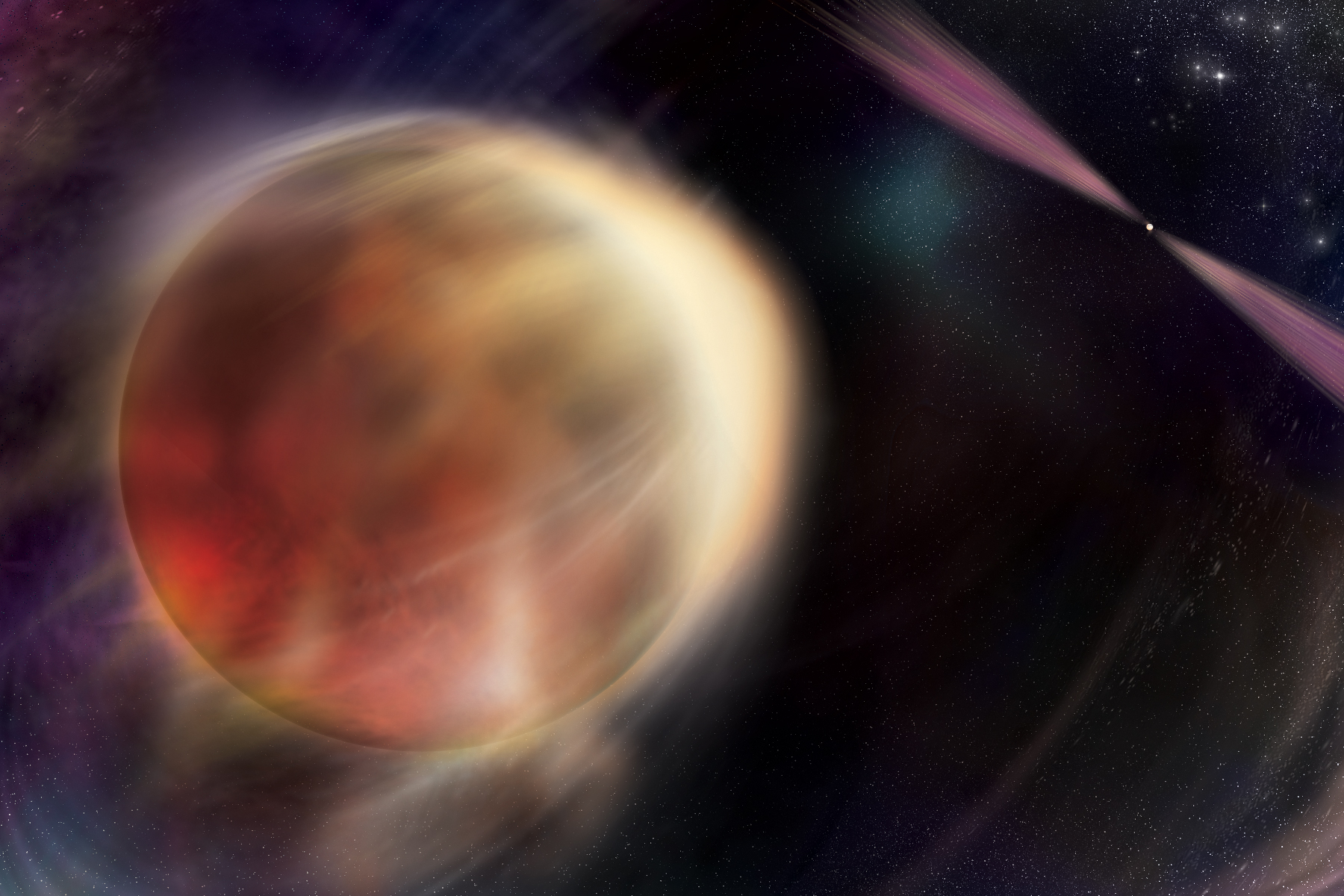Fermi Spots Gamma-ray Eclipsing 'Spider Systems'

An international team of scientists scoured over a decade of Fermi observations to find seven spiders that undergo these eclipses, which occur when the low-mass companion star passes in front of the pulsar from our point of view. The data allowed them to calculate how the systems tilt relative to our line of sight and other information.
Spider systems develop because one star in a binary evolves more swiftly than its partner. When the more massive star goes supernova, it leaves behind a pulsar. This stellar remnant emits beams of multiwavelength light, including gamma rays, that sweep in and out of our view, creating pulses so regular they rival the precision of atomic clocks.
Early on, a spider pulsar “feeds” off its companion by siphoning away a stream of gas. As the system evolves, the feeding stops as the pulsar begins to spin more rapidly, generating particle outflows and radiation that superheat the companion’s facing side and erode it.
Scientists divide spider systems into two types named after spider species whose females sometimes eat their smaller mates. Black widows contain companions with less than 5% of the Sun’s mass. Redback systems host bigger companions, both in size and mass, weighing between 10% and 50% of the Sun.
Researchers can calculate the masses of spider systems by measuring their orbital motions. Visible light observations can measure how quickly the companion is traveling, while radio measurements reveal the pulsar’s speed. However, these rely on motion towards and away from us. For a nearly face-on system, such changes are slight and potentially confusing. The same signals also could be produced by a smaller, slower-orbiting system that’s seen from the side. Knowing the system’s tilt relative to our line of sight is vital for measuring mass.
The tilt’s angle is normally measured using visible light, but these measurements come with some potential complications. As the companion orbits the pulsar, its superheated side comes in and out of view, creating a fluctuation in visible light that depends on the tilt. However, astronomers are still learning about the superheating process, and models with different heating patterns sometimes predict different pulsar masses.
Gamma rays, however, are only generated by the pulsar and have so much energy that they travel in a straight line, unaffected by debris, unless blocked by the companion. If gamma rays disappear from the data set of a spider system, scientists can infer that the companion eclipsed the pulsar. From there, they can calculate the system’s tilt into our sight line, the stars’ velocities, and the pulsar’s mass.
PSR B1957+20, or B1957 for short, was the first-known black widow, discovered in 1988. Earlier models for this system built from visible light observations determined that it was tipped about 65 degrees into our line of sight and the pulsar’s mass was 2.4 times the Sun’s. That would make B1957 the heaviest-known pulsar, straddling the theoretical mass limit between pulsar and black hole.
By looking at the Fermi data, scientists found 15 missing gamma-ray photons. The timing of the gamma-ray pulses from these objects is so dependable that 15 missing photons over a decade is significant enough that the team could determine the system is eclipsing. They then calculated that the binary is inclined 84 degrees and the pulsar weighs only 1.8 times as much as the Sun.
For More Information
Credits
Scott Wiessinger (KBR Wyle Services, LLC): Lead Producer
Aurore Simonnet (Sonoma State University): Lead Illustrator
NASA's Goddard Space Flight Center. However, individual items should be credited as indicated above.
https://www.nature.com/articles/s41550-022-01874-x
Short URL to share this page:
https://svs.gsfc.nasa.gov/14281
Mission:
Fermi Gamma-ray Space Telescope
This item is part of this series:
Astrophysics Stills
Keywords:
SVS >> Neutron Star
SVS >> Astrophysics
SVS >> Pulsar
SVS >> Space
SVS >> Fermi
SVS >> Star
NASA Science >> Universe
SVS >> Gamma Ray











